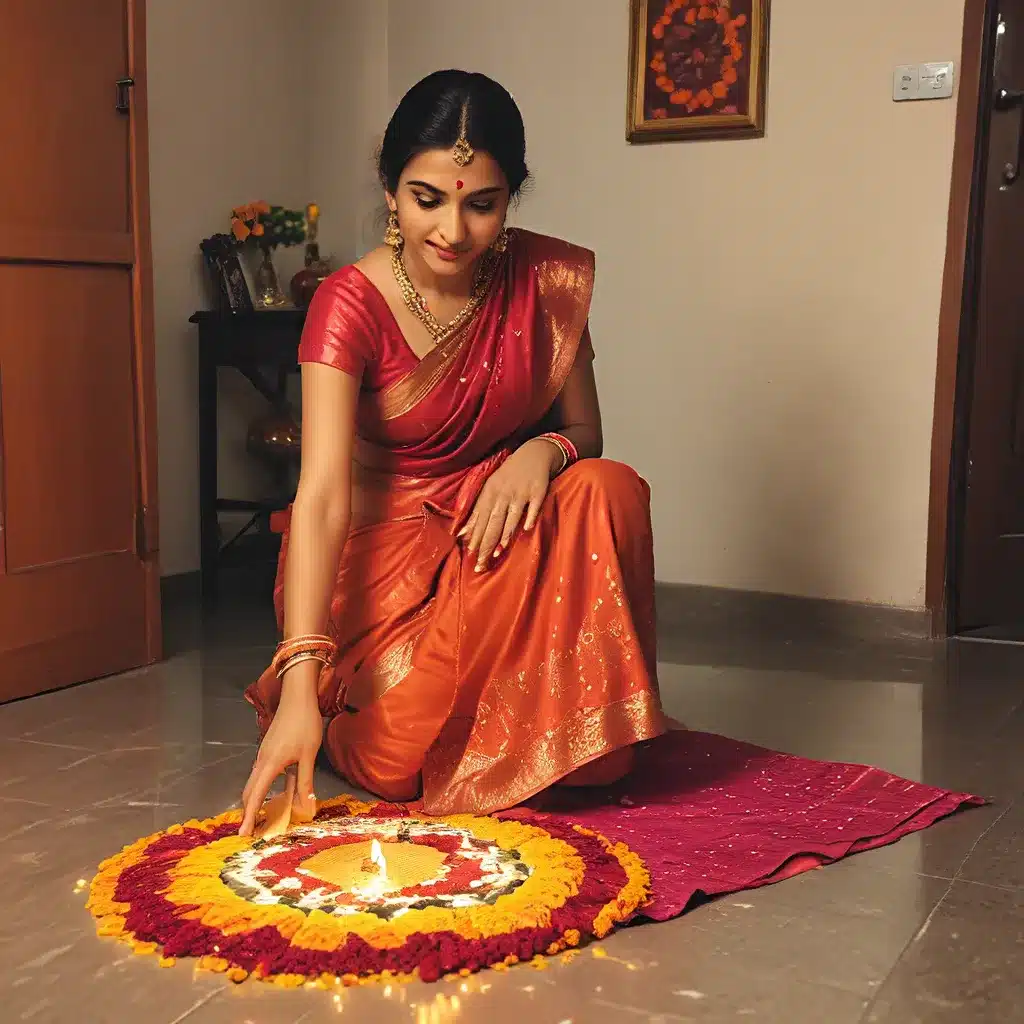As the crisp autumn air sets in and the days grow shorter, a vibrant and joyous festival sweeps across the globe – Diwali, the Festival of Lights. This captivating celebration unites people from diverse communities and backgrounds, bridging cultural divides and igniting a sense of unity.
Having grown up in a relatively homogeneous community, I’ll admit that I didn’t always fully grasp the profound significance of Diwali. But as my own family has grown more diverse and my children have become increasingly curious about the customs and traditions of their peers, I’ve found myself on a delightful journey of discovery.
One of the most fascinating aspects of Diwali, I’ve learned, is the cleaning and preparation that precedes the main festivities. It’s a time-honored tradition that holds deep symbolic meaning, and one that I’ve come to appreciate more and more.
The Great Diwali Clean
In the days leading up to Diwali, homes are meticulously cleaned from top to bottom. This isn’t your average weekly tidy-up, mind you – it’s a thorough, multi-day affair that transforms living spaces into shimmering sanctuaries. Floors are scrubbed, windows are polished, and every nook and cranny is given the royal treatment.
But why, you might ask, do people go to such great lengths to clean their homes for Diwali? Well, it’s all about welcoming the Goddess Lakshmi – the revered deity of wealth, prosperity, and good fortune. The idea is that by creating a spotless, radiant environment, we’re inviting Lakshmi to bless our homes and our lives with her abundant blessings.
It’s a practice that resonates deeply with me as a professional cleaning services provider. I can’t help but appreciate the care and attention to detail that goes into these Diwali preparations. It’s a reminder that cleaning isn’t just about tidiness – it’s about creating a space that uplifts the spirit and nourishes the soul.
The Art of Rangoli
As the deep cleaning winds down, a truly captivating tradition emerges – the creation of Rangoli. These intricate, colorful designs are meticulously crafted on the floors, often in the entryways or courtyards of homes. Using powdered colors, flower petals, or even rice, artists transform simple spaces into vibrant works of art.
The process of making Rangoli is a meditative one, requiring patience, precision, and a keen eye for design. It’s not uncommon for families to work together, with each member contributing their unique artistic touch. The end result is a stunning display that not only beautifies the home but also symbolizes the welcoming of prosperity and good luck.
As I’ve learned more about this tradition, I’ve been struck by the communal aspect of Rangoli-making. It’s a practice that brings people together, fostering a sense of shared purpose and creative expression. Neighbors might gather to admire each other’s creations, and children often delight in the opportunity to add their own flourishes to the designs.
Lighting the Way
With the cleaning and Rangoli-making complete, the stage is set for the main event of Diwali – the lighting of diyas, or clay lamps. These small, flickering lights are placed throughout the home, both indoors and out, creating a warm, inviting ambiance that radiates joy and celebration.
The act of lighting the diyas is imbued with deep spiritual significance. It represents the triumph of light over darkness, a metaphor for the victory of good over evil. As the flames flicker and dance, they symbolize the illumination of knowledge, the banishment of ignorance, and the fostering of renewed hope and optimism.
But the lighting of diyas is more than just a symbolic gesture – it’s also a practical way to illuminate the darkness. In many parts of the world, Diwali coincides with the onset of winter, when the days grow shorter and the nights become longer. The twinkling lights of the diyas serve as a beacon of warmth and cheer, guiding the way through the lengthening shadows.
Embracing the Spirit of Diwali
As I’ve delved deeper into the customs and traditions of Diwali, I’ve come to appreciate the profound meaning and significance that underlie this captivating festival. It’s not just about the lights, the sweets, and the fireworks – it’s about unity, renewal, and the triumph of goodness.
The meticulous cleaning, the intricate Rangoli designs, and the glow of the diyas all serve as a reminder that we must constantly strive to uplift our surroundings and elevate our spirits. It’s a call to action, a challenge to embrace the best version of ourselves and to spread that light to those around us.
As I reflect on the lessons of Diwali, I can’t help but feel inspired to incorporate some of these beautiful customs into my own life and home. Perhaps I’ll start by setting aside a day for a deep, intentional clean, or by learning the art of Rangoli-making with my family. And of course, I’ll be sure to light a few diyas to illuminate the darkness and celebrate the triumph of good over evil.
After all, Diwali is not just an Indian festival – it’s a global celebration of unity, hope, and the power of light. And in these uncertain times, I believe we could all use a little more of that.







